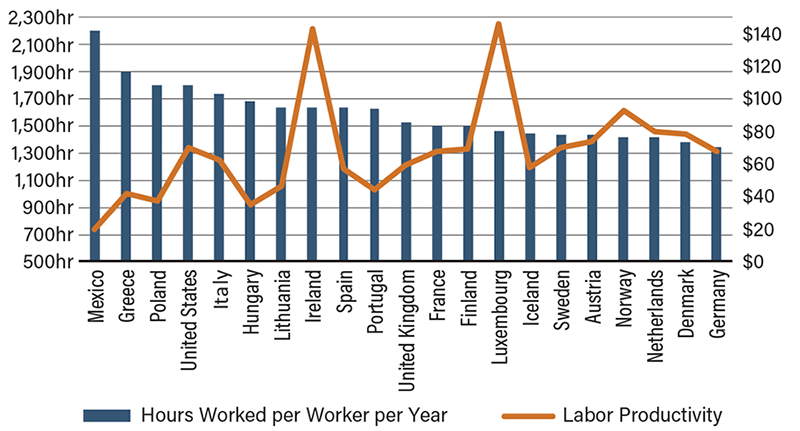USA vs Europe: Who’s Working Smarter, Not Harder?

“Dear Europe, we have higher economic growth and we’re set for a soft landing,” America wrote in an email to its cousin at 7 p.m. before signing off work. “We are currently out of the office until an unspecified date,” Europe auto-replied. The stereotype of work culture and productivity in the United States and Europe has long provided us with good laughs, but how much of it is truth and how much is a myth?
The number of hours clocked annually per U.S. worker was 1,799 in 2023. For that same year, United Kingdom workers punched their time cards for 1,524 hours while Germans worked 1,343. It may come as a surprise to many that Greece clocked 1,897 hours per worker last year. When it comes to hours worked, the stereotype is a mix of both truth and myth.
But remember that sitting at your office for longer hours does not necessarily translate into higher productivity. In fact, labor productivity measured by gross domestic product (GDP) per unit of labor in 2023 was highest in Luxembourg, where an average worker clocked only 1,462 hours for the year. Standing at $146, Luxembourg’s labor productivity was more than double that of the United States, which was $70. Many European countries, including Ireland, Norway, the Netherlands, Denmark, Switzerland, Belgium and Austria, had higher labor productivity than the United States and all worked fewer hours. Nonetheless, the United States was still the 11th most productive country in the world, with labor productivity higher than Southern and Eastern Europe.
Judging by the real GDP growth rate, the United States has been growing faster than Europe in recent quarters. GDP per capita also grew faster in the United States in 2023 than in the European countries that had higher labor productivity. It’s important to note than GDP—i.e., output—is derived from labor and capital and also boosted by technology. This suggests it is likely capital and technology that are driving growth in the United States. Therefore, American workers may want to consider an optimal level of work hours that leverages their thriving capital and technology—and perhaps send that mocking email to Europe at 4 p.m. instead of 7 p.m.
Longer Work Hours Don’t Equal Higher Labor Productivity

SOURCE: Federal Reserve of St. Louis.
